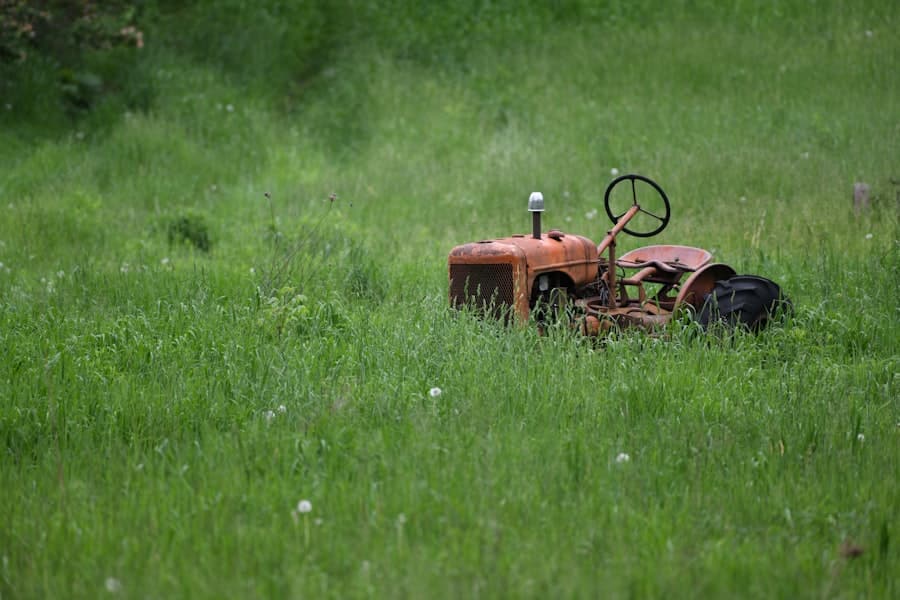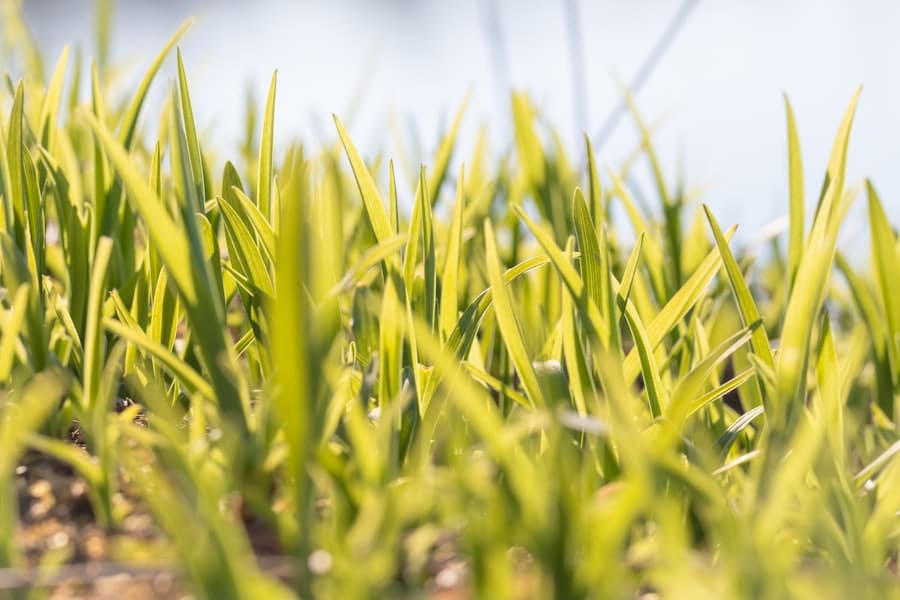Landscaping maintenance is an essential aspect of homeownership that often goes overlooked. You may find yourself captivated by the beauty of a well-kept garden or a meticulously manicured lawn, but achieving that level of aesthetic appeal requires consistent effort and attention. Landscaping is not merely about planting flowers or laying down sod; it encompasses a comprehensive approach to caring for your outdoor space.
By understanding the various components of landscaping maintenance, you can ensure that your property remains vibrant and inviting throughout the year. As you embark on your landscaping journey, it’s crucial to recognize that maintenance is an ongoing process. It involves a series of tasks that vary in frequency and complexity, from simple weekly chores to more involved seasonal and annual responsibilities.
By establishing a routine and adhering to a maintenance schedule, you can cultivate a landscape that not only enhances your home’s curb appeal but also contributes to its overall value. In this article, you will discover the various tasks involved in landscaping maintenance, providing you with the knowledge needed to keep your outdoor space thriving.
Key Takeaways
- Landscaping maintenance is essential for keeping your outdoor space looking its best and preserving the health of your plants and hardscape features.
- Weekly maintenance tasks include mowing the lawn, weeding, and checking for any signs of pests or disease.
- Monthly maintenance tasks may include fertilizing, pruning, and inspecting irrigation systems for any leaks or malfunctions.
- Seasonal maintenance tasks such as mulching, aerating the soil, and planting seasonal flowers help to keep your landscape healthy and vibrant.
- Following an annual maintenance schedule ensures that all aspects of your landscaping, from irrigation systems to hardscape features, are properly maintained and cared for.
Weekly Maintenance Tasks
Regular Mowing for a Healthy Lawn
Regular mowing not only keeps your grass looking neat but also promotes healthy growth by preventing weeds from taking root. You should aim to mow your lawn when it reaches about one-third taller than your desired height, ensuring that you don’t cut it too short, which can stress the grass.
Weeding and Edging for a Pristine Garden
Weeds can quickly overtake your landscape if left unchecked, competing with your plants for nutrients and water. By dedicating a little time each week to pull out these unwanted intruders, you can maintain the health of your plants and keep your garden looking pristine. Edging along pathways and flower beds not only enhances the visual appeal of your landscape but also helps to define spaces, making it easier to manage different areas of your yard.
Weekly Tasks for a Well-Maintained Landscape
By incorporating regular mowing, weeding, and edging into your weekly routine, you can maintain a healthy and visually appealing outdoor environment that you can enjoy for years to come.
Monthly Maintenance Tasks

While weekly tasks are essential for immediate upkeep, monthly maintenance tasks allow you to take a more in-depth approach to your landscaping care. One important monthly task is fertilizing your lawn and garden beds. Depending on the type of plants you have, you may need to apply different fertilizers at various times throughout the growing season.
By providing your plants with the necessary nutrients, you can promote robust growth and vibrant blooms. Another crucial monthly task is inspecting your irrigation system for any leaks or malfunctions. A well-functioning irrigation system is vital for maintaining healthy plants, especially during dry spells.
Take the time to check for broken sprinkler heads or clogged lines, as these issues can lead to uneven watering and ultimately harm your landscape. By addressing these problems promptly, you can ensure that your plants receive the hydration they need to thrive.
Seasonal Maintenance Tasks
As the seasons change, so do the needs of your landscape. Seasonal maintenance tasks are designed to prepare your outdoor space for the upcoming weather conditions while ensuring that it remains healthy and attractive year-round. In spring, for instance, you should focus on cleaning up any debris that has accumulated over the winter months.
This includes raking leaves, removing dead plants, and clearing away any fallen branches. A thorough spring cleaning sets the stage for new growth and revitalizes your garden. In summer, it’s essential to monitor your plants for signs of pests or diseases.
The warmer weather can attract various insects that may threaten the health of your landscape. Regularly inspecting your plants allows you to catch any issues early on and take appropriate action before they escalate into more significant problems. Additionally, summer is an excellent time to prune any overgrown shrubs or trees, promoting better air circulation and encouraging healthy growth.
Annual Maintenance Tasks
Annual maintenance tasks are often more extensive and require a bit more planning than weekly or monthly chores. One of the most critical annual tasks is soil testing. By analyzing the nutrient levels and pH balance of your soil, you can determine what amendments are necessary to support healthy plant growth.
This proactive approach ensures that your landscape receives the right nutrients throughout the year. Another vital annual task is planting new flowers or shrubs to refresh your garden beds. Each year presents an opportunity to experiment with different plant varieties or redesign certain areas of your landscape.
By incorporating new elements into your garden, you can keep it looking fresh and vibrant while also enhancing its overall appeal. Additionally, consider mulching around your plants annually; this helps retain moisture in the soil and suppresses weed growth.
Irrigation System Maintenance

Your irrigation system plays a crucial role in maintaining a healthy landscape, making its upkeep essential for successful gardening. Regular maintenance of this system ensures that water is distributed evenly across your lawn and garden beds, preventing dry patches or overwatering in certain areas. Start by checking all components of the system, including hoses, drip lines, and sprinkler heads, for any signs of wear or damage.
You should also adjust the timing and duration of watering based on seasonal changes and rainfall patterns. During hotter months, you may need to increase watering frequency, while cooler months may require less frequent irrigation. Additionally, consider installing a rain sensor or smart irrigation controller that adjusts watering schedules based on weather conditions, promoting water conservation while keeping your landscape healthy.
Lawn Care and Maintenance
Lawn care is a significant aspect of landscaping maintenance that requires attention throughout the year. Beyond regular mowing, there are several other practices you should incorporate into your routine to ensure a lush and healthy lawn. Aeration is one such practice that involves perforating the soil with holes to allow air, water, and nutrients to penetrate deeper into the root zone.
This process helps alleviate soil compaction and promotes healthier grass growth. Fertilization is another critical component of lawn care. Depending on the type of grass you have, you may need to apply specific fertilizers at different times during the growing season.
A well-fertilized lawn not only looks vibrant but also withstands pests and diseases more effectively. Additionally, consider overseeding in early fall or spring to fill in bare patches and improve overall density.
Tree and Shrub Care
Caring for trees and shrubs is vital for maintaining a balanced landscape ecosystem. Regular pruning is essential for promoting healthy growth and preventing overcrowding among branches. By removing dead or diseased limbs, you can enhance air circulation within the canopy and reduce the risk of pest infestations or diseases spreading throughout the plant.
In addition to pruning, be sure to monitor your trees and shrubs for signs of stress or disease. Look for discolored leaves, wilting branches, or unusual growth patterns that may indicate underlying issues. Early detection allows you to take appropriate action—whether through treatment or removal—ensuring that your landscape remains healthy and visually appealing.
Flower Bed Maintenance
Flower beds are often the focal point of any landscape design, making their maintenance crucial for overall aesthetic appeal. Regular deadheading—removing spent blooms—encourages new growth and prolongs flowering periods for many plants. This simple task not only keeps your flower beds looking tidy but also promotes a more vibrant display throughout the growing season.
Additionally, consider rotating annuals in your flower beds each year to prevent soil depletion and reduce pest problems associated with specific plant families. By diversifying plant selections, you can create a dynamic visual experience while supporting a healthier ecosystem within your garden beds.
Hardscape Maintenance
While softscapes—plants and greenery—are often emphasized in landscaping discussions, hardscapes such as patios, walkways, and retaining walls require just as much attention. Regular cleaning is essential for maintaining these structures; dirt, algae, or moss can accumulate over time, detracting from their appearance and potentially causing safety hazards. Inspecting hardscape features for cracks or damage is equally important.
Addressing these issues promptly can prevent further deterioration and costly repairs down the line. Additionally, consider sealing stone or concrete surfaces annually to protect them from weather-related wear and tear while enhancing their longevity.
Importance of Following a Maintenance Schedule
Establishing a landscaping maintenance schedule is vital for ensuring that all aspects of your outdoor space receive adequate care throughout the year. By breaking down tasks into manageable segments—weekly, monthly, seasonal, and annual—you can avoid feeling overwhelmed by the sheer volume of work required to maintain a beautiful landscape. Moreover, adhering to a schedule allows you to track progress over time and make adjustments as needed based on changing conditions or plant health.
A well-maintained landscape not only enhances curb appeal but also contributes positively to your home’s value while providing a serene outdoor space for relaxation and enjoyment. In conclusion, landscaping maintenance is an ongoing commitment that requires diligence and attention to detail. By understanding the various tasks involved—from weekly mowing to annual soil testing—you can cultivate an outdoor environment that thrives year-round.
Embrace this journey as an opportunity not only to beautify your property but also to connect with nature in meaningful ways.
If you are looking for landscaping services in Riverside, California, you may want to check out this article that discusses the typical maintenance schedule recommended by landscaping services. Additionally, if you are in need of tree removal services, you can find more information in this article. For those in Virginia Beach, Virginia, you can learn about landscaping services specific to your area in this article.
FAQs
What is a typical maintenance schedule recommended by landscaping services?
Landscaping services typically recommend a maintenance schedule that includes regular lawn mowing, trimming of shrubs and trees, fertilization, weed control, and seasonal clean-up.
How often should lawn mowing be done according to landscaping services?
Landscaping services usually recommend lawn mowing to be done on a weekly or bi-weekly basis, depending on the growth rate of the grass and the season.
When should shrubs and trees be trimmed as per landscaping services?
Landscaping services often recommend trimming shrubs and trees at least once a year, typically in the late winter or early spring before new growth begins.
What is the recommended frequency for fertilization by landscaping services?
Landscaping services typically recommend fertilizing the lawn 3-4 times a year, with specific timing and types of fertilizer depending on the grass type and local climate.
How often should weed control be carried out according to landscaping services?
Landscaping services often recommend regular weed control treatments throughout the growing season, typically every 4-6 weeks, to prevent weed infestations.
What does seasonal clean-up entail according to landscaping services?
Seasonal clean-up recommended by landscaping services includes tasks such as removing leaves and debris, aerating the lawn, overseeding, and preparing the landscape for the upcoming season.
